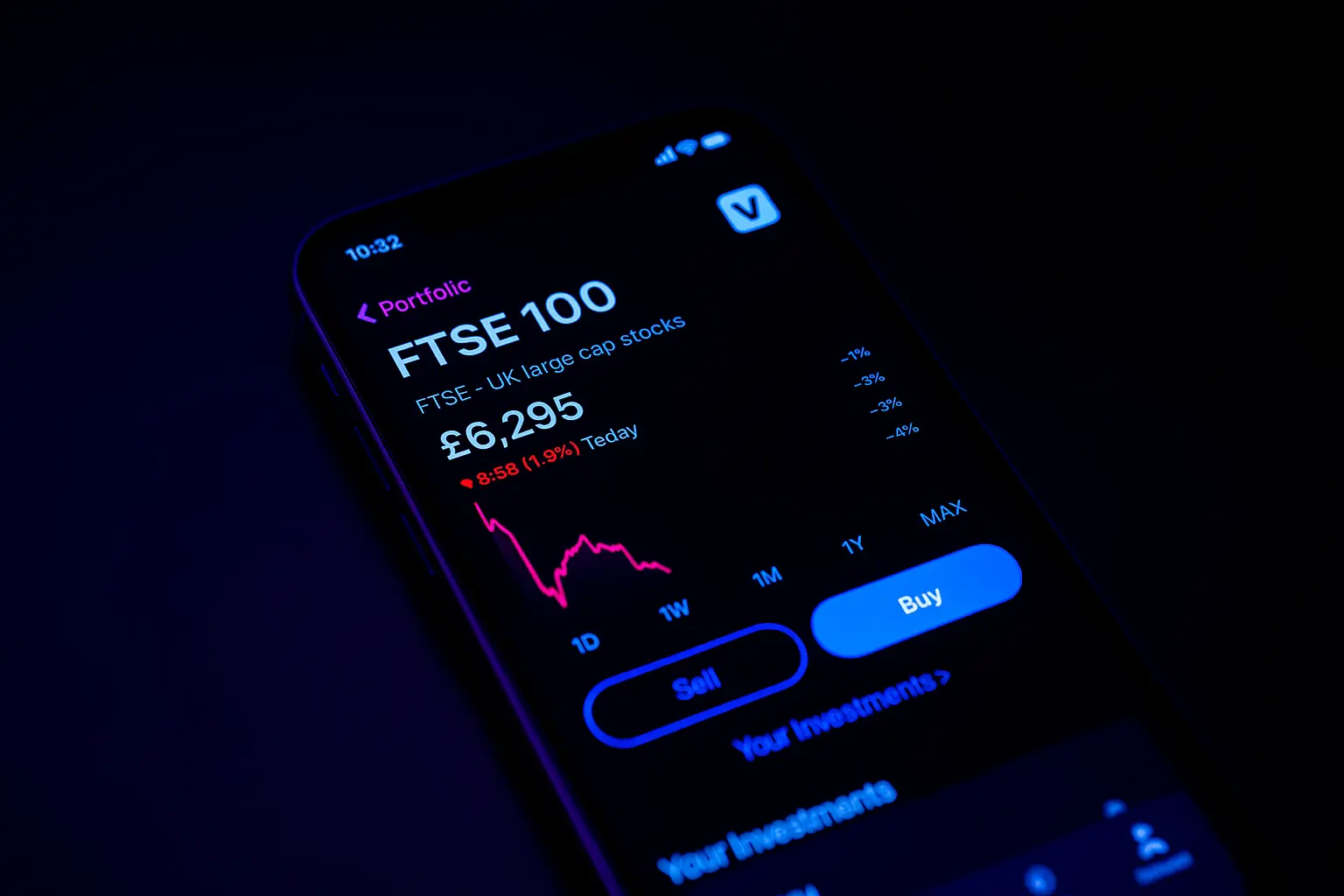
We’ve been excited by the accelerated pace of growth in FinTech throughout last year with a steady rise in a range of areas, including digital banking, and autonomous finance.
According to CB Insights, global funding for the sector YoY exceeded 2021 totals by 96%. Quarter 3 of 2021 was the second highest quarter for fintech mega-rounds, as 94 deals were made. There is also a steady stream of new entrants bolstering innovation and more of them are coming from outside of the States. In fact, so far in 2021, 65% of early-stage deal activity happened outside of the US, which is the greatest amount to date.
We've seen a huge rise in FinTech funding, and throughout 2021, more companies have joined the ‘Decacorns’ list - the list of fintech companies that received more than US$10bn in funding. Among the largest of these are PayPal and Square.
So what will the future hold for the financial industry in 2022? Here are our 5 fintech trends to watch. As always, let’s check in at the end of the year and see how many of these came true!

Digital end-to-end customer solutions
Digital-only banks were a trend that we predicted last year, but it’s one that is on a steady growth trajectory and is likely to become much more mainstream in 2022. The start of the pandemic meant wide-ranging digital transformation in the sector with bricks and mortar bank branches closed to customers in many parts of the world.
Last year, a McKinsey study revealed that digital payment is up there with the biggest fintech products. New generation financial institutions solved the emerging challenge by leveraging fintech solutions. They were able to offer convenient digital-only banking services leading to decreased physical visits. And there will be increasingly more digital institutions which will provide fully remote services, which is great news of course for consumers who are interested in fast real time payments.
Alex Valdes, CTO and EVP of Trust Stamp says: “Customer experience demands are evolving, especially with newer generations. These customers want convenience and speed. They have less interest in building personal relationships with staff at a bank, and less time in their schedule to handle these tasks in person.”
But, as discussed in the most recent edition of the 10Clouds Business Banking of the Future workshops, there are still certain customers who desire to speak to an advisor as and when needed. This is even more important for business clients. So the future may well lie in solutions that effectively combine the two.
Karol Stępien, Head of Banking & FinTech at 10Clouds says: “We’re seeing that customers are increasingly craving an interconnected experience in digital banking. They ideally want to access all their financial solutions in one platform. When they need advice, or guidance, they would also like to have the option of speaking to an advisor.”
The steady growth of embedded finance
We recently wrote about how embedded finance has taken the financial world by storm, and its growth is likely to continue well into 2022. To recap, the term is used to describe the seamless integration of financial services into a traditionally non-financial platform. It allows customers to access financial services within the context of what they’re doing. A good example is an online taxi app which includes an inbuilt payment solution.
A key part of embedded finance is Buy-now-Pay-later, which is well on its way to becoming mainstream in 2022, with solutions such as PayPal, Klarna and PayPo offering customers exactly what they need in online shopping - namely seamless and easy transactions.
Embedded investment programs make the arena even more accessible, by offering easy and inexpensive access to funds and stocks. A key player in this market is Acorns, an embedded investment app that rounds up its users' spare change from purchases, automatically allowing them to save and invest. This is another area that is likely to grow exponentially next year.
Karol Stępień, Head of Banking & FinTech at 10Clouds says: “Financial services are not the ultimate goal for the end customer. The customer’s aim might be for example to buy a house, to lease a car, to gain more clients but with limited risk, etc. - not to take out credit or to open a bank account. This means that financial services only act as a facilitating tool here. They are not the ultimate goal. Having this perspective in mind will help us to better understand why embedded services are gaining more and more traction.”

The rise of cross-border e-commerce
We all know that Covid resulted in a huge increase in home-deliveries, and with that came a corresponding expansion in international e-commerce. This in turn offered significant growth potential for SMEs across the world. According to a study by Accenture, the total cross-border payment flow is currently growing by around 5% (CAGR) a year and is predicted to exceed $156 trillion by 2022.
But while customers are already being offered simple payment solutions for purchasing products from across the globe, many SMEs are still struggling with foreign payments. They’ve been described as ‘the squeezed middle’ when it comes to forex. Why?
- Regulatory red tape: The long list of regulations prevents companies from accessing services such as underwriting or invoice financing. In practice, this means that SME owners face hurdles when they try to raise working capital and keep operations running.
- Not enough FX risk advice: Findings from a HSBC survey show that 70% of CFOs said that their companies had reduced earnings over the past couple of years due to unhedged Forex risk. This shows that many SME execs haven’t been offered sufficient risk advice and don’t have enough know-how in this area.
- An unaffordable one-size-fits-all approach to Forex: There’s still no global payments provision for SME clients, which means that they are forced to use the often unaffordable solutions designed for enterprises.
Luckily, new solutions are emerging, including BaaS platforms offering foreign currency digital payments, such as OpenPayd, Curve, Stripe and Airwallex. 2022 is likely to see a rise in the usage of these platforms, as well as an emergence of new players on the market.

Traditional financial institutions looking for alternative extreme yield areas like crypto assets and NFTs
While many financial analysts focus on how blockchain technology can disrupt banking, it is worth taking note that a number of traditional banks are actually jumping on the blockchain bandwagon, largely due to the extreme yields that it offers in comparison to traditional channels. But it also has other uses in the sector.
BNP Paribas has announced it will begin looking at how blockchain technology can be applied to its currency funds and for order processing. At the same time, tech-focused stock exchange NASDAQ OMX Group has revealed that it is working with blockchains to "reduce the time, costs, and points of friction across the capital markets."
An additional benefit of blockchain is that it provides unbeatable security for both ends of the transaction funnel, particularly when it comes to identity management. It is being used more widely to fight fraud and to manage regulatory and audit issues.
Finally, it’s important to remember the speed of blockchain transactions. The technology can accelerate asset transfers, payments, and even investments, while simultaneously eliminating errors that cause delays and costs.
Given these advantages, it’s easy to see why Blockchain is a trend none of us can afford to ignore.
The emerging trend of Platform as a Service (PaaS)
The fintech industry is always trying to balance two essential sides of its offer to customers: efficiency and security. With evolving financial regulations in many parts of the world, customer data APIs appear to be a sensible solution. Platform-as-a-service provision essentially means that banks and FinTechs can adapt to regulatory changes with a customized infrastructure, enabling them to embrace the cloud.

2022 is a year of promise for FinTech development
So there you have it - our FinTech trends to watch for 2022. There are certainly many exciting developments on the horizon in the financial services industry. Now all we need to do is check in at the end of the year to see how many of these came true.



